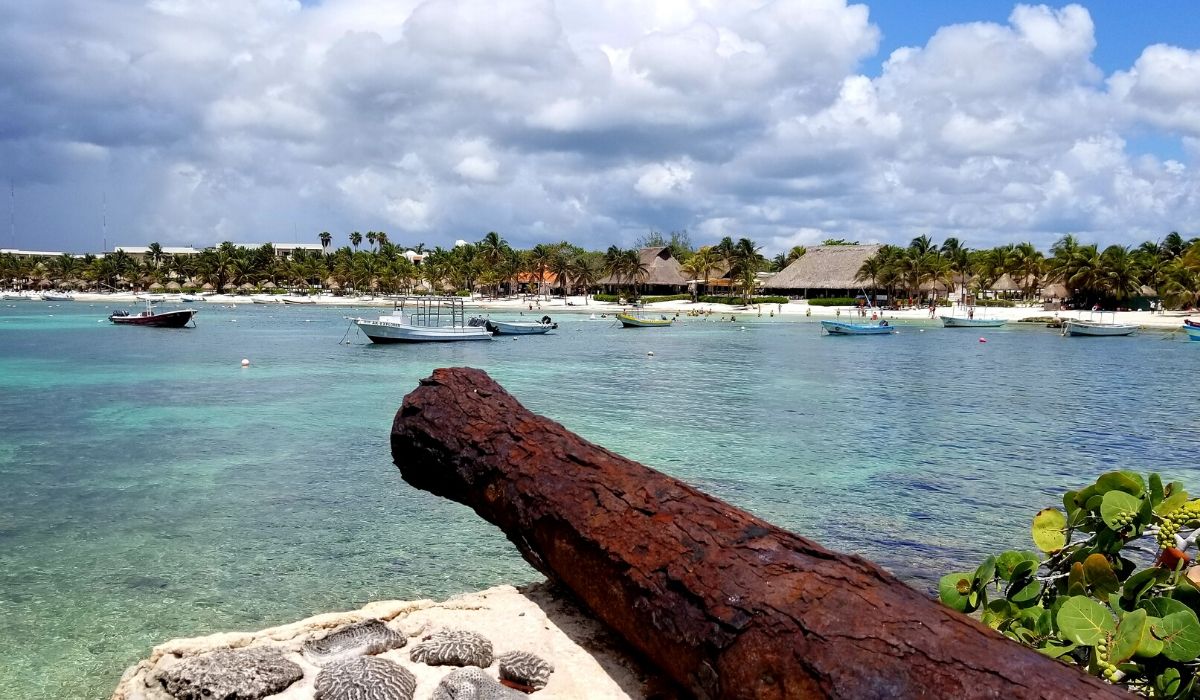Located just south of Aventuras Akumal and Bahia Principe Resort is the locally famous wreck of the Matanceros. According to the archives in Spain this frigate class Spanish merchant ship was officially called Nuestra Señora de los Milagros (Our Lady of Miracles) and was sailing near the Caribbean coast of the Yucatan on February 22, 1741 when it crashed into the coral reefs just offshore. Although the details of her exact hull design are not known we do know that she was 73 feet in length, with a keel of 60 feet, a beam of 20 feet and a draft of about 10 feet, and like most merchant ships of her time she was armed. She carried 16 small iron cannons and four swivel guns. At least 4 of the cannons are now fronting Akumal’s main bay.

History of Akumal and Mantaceros
During the autumn of 1740 Spain was at war with England and the Caribbean shipping lanes were infested with English privateers based in Jamaica. Despite the risk to his crew and cargo, Captain Juan Bacaro and a crew of 69 set sail from Cadiz on November 30, 1740 with a ship packed full of the kind of goods that would fetch enormous prices when sold in the colonial port of Vera Cruz, that is if she made it there. Her cargo consisted of both registered and un-registered items, a common practice during her time. The registered cargo included an uninteresting and bulky 100 tons of pig iron, and 25 tons of tempered steel wire. Along with the heavy metal was another 50 tons of saleable household goods consisting of knives, spoons scissors, needles, buttons, buckles, writing quills, paper and glassware, window glass, walnut and almond oil, lavender and hand tools. Also listed were 750 barrels, 400 casks, 204 cases, and 21,200 bottles of brandy and wine. At least part of the unregistered cargo was known to be bales of English cloth and clothing. Items which would have brought a fantastic price if El Matancero had reached her destination.
Artifacts found in the Mexican Caribbean
The most notable recovered artifacts from the wreck are its cannons (several of which point out to sea at the entrance to Akumal Bay) and a large quantity of necklace crucifixes of different sizes and styles. Also recovered over the years are thousands of glass beads (usually clear or blue), brass belt buckles, coins and some gems. The reason why the ship was wrecked has never been absolutely determined despite a sizable amount of archived records about the ship and her sinking. There is no record of severe regional storms at the time and nothing in the extensive British Admiralty records mentioning any attacks from Royal Navy ships. It is speculated that Captain Juan Bacaro decided to set a course to sail between the island of Cozumel and the mainland to avoid any British privateers or warships of the Royal Navy that might have been in the area. This would have been risky since it would have placed the ship at the mercy of the trade winds, with the entire Caribbean coast of the Yucatan and its treacherous reefs as a lee shore. The gamble would only payoff if he could make it to the tip of the Yucatan. Once there he would have an easy run west to his destination Vera Cruz, in the Gulf of Mexico. Based on the evidence we can only speculate. We may never be certain.
Snapshot in time lies beneath the sea
The wreck of any sailing ship in the Caribbean conjures up an image of bounty worth millions of dollars in gold, silver, and gems, from Peru to Isla Margarita. A shipwreck is virtually a snapshot of a moment, forever tied to its dynamic entity that was a ship, with crew and cargo all coming to an end in an instant. This is unlike most archaeological sites on land, which represent human activity spread over generations of time. The artifacts associated with any given wreck provide an invaluable picture of life at that place, at that time. The wreck of El Matancero is a prime example.
Read more about Akumal in the Riviera Maya south of Cancun, Mexico.
